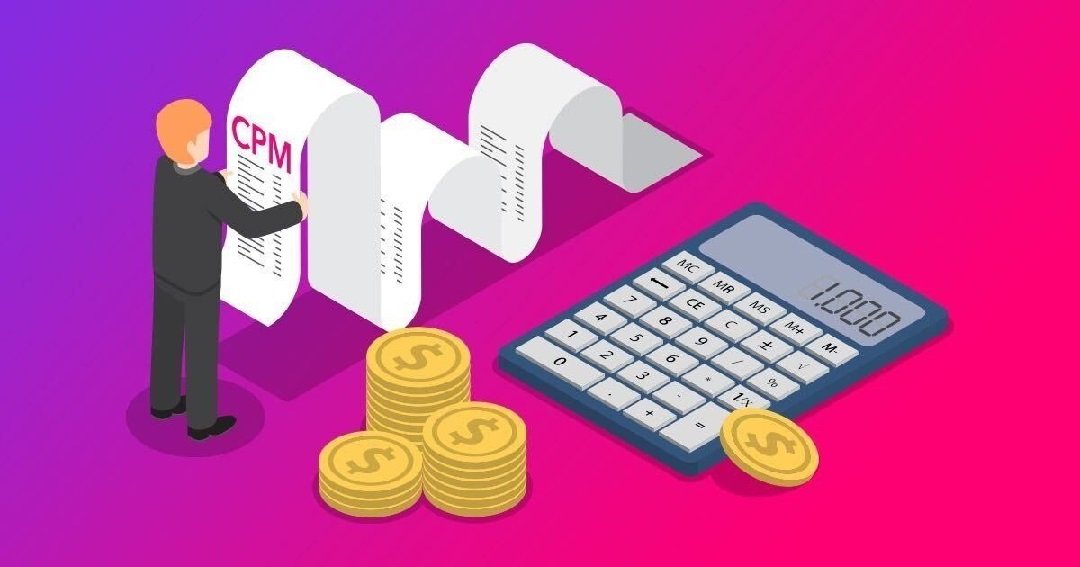In the world of digital advertising, CPM (Cost Per Mille) is a fundamental metric that plays a crucial role in the planning and execution of marketing campaigns. It is essential for marketers to understand what CPM is, how it works, and how it impacts their advertising strategy. In this comprehensive guide, we will delve into the intricacies of CPM, exploring its definition, calculation, advantages, and practical applications in digital marketing.
What is CPM?
CPM, also known as Cost Per Thousand Impressions, is a metric used to quantify the cost of 1,000 advertisement impressions on a webpage. The term “mille” is derived from the Latin word for thousand. In simpler terms, CPM represents the price advertisers pay for their ads to be shown 1,000 times to potential customers what is CPM.
How is CPM Calculated?
The formula for calculating what is CPM is straightforward:
CPM=(Total Ad SpendTotal Impressions)×1000\text{CPM} = \left( \frac{\text{Total Ad Spend}}{\text{Total Impressions}} \right) \times 1000
For example, if an advertiser spends $500 on a campaign that generates 200,000 impressions, the CPM would be:
CPM=(500200,000)×1000=$2.50\text{CPM} = \left( \frac{500}{200,000} \right) \times 1000 = \$2.50
This means the advertiser is paying $2.50 for every 1,000 impressions their ad receives.
Why is CPM Important?
CPM is a critical metric for several reasons:
- Budget Planning: CPM allows advertisers to estimate how much budget is required to achieve a certain number of impressions, facilitating better financial planning.
- Performance Measurement: By analyzing what is CPM, marketers can gauge the efficiency of their campaigns in terms of cost versus reach.
- Benchmarking: CPM serves as a standard for comparing the cost-effectiveness of different advertising platforms and strategies.
Advantages of Using CPM
Cost Predictability
One of the main advantages of using CPM is its predictability. Advertisers can forecast their spending more accurately based on the desired number of impressions. This predictability is especially useful for campaigns focused on brand awareness, where the primary goal is to maximize visibility rather than immediate conversions.
Wide Reach
CPM campaigns are excellent for reaching a broad audience. Since the cost is tied to impressions rather than clicks or actions, advertisers can ensure their message is seen by a large number of people. This is particularly beneficial for new product launches or rebranding efforts.
Efficient Resource Allocation
By understanding the CPM rates across various platforms, marketers can allocate their budgets more efficiently. For instance, if one platform offers a lower CPM but a higher engagement rate, it might be a more cost-effective choice for reaching the target audience.
CPM in Different Advertising Platforms
CPM in Display Advertising
In display advertising, what is CPM is a prevalent pricing model. Advertisers pay for the number of times their banner ads, video ads, or other visual ads are displayed to users. Display networks like Google Display Network (GDN) and social media platforms like Facebook and Instagram frequently use CPM to charge for ad placements.
CPM in Video Advertising
Video advertising platforms like YouTube often utilize CPM as a billing method. Advertisers pay for every 1,000 views or impressions their video ads receive. Given the high engagement potential of video content, CPM can be an effective way to ensure widespread visibility.
CPM in Programmatic Advertising
Programmatic advertising, which automates the buying and selling of online ad space, commonly uses CPM. Through real-time bidding (RTB), advertisers can bid on ad impressions in milliseconds, ensuring their ads are shown to the right audience at the right time. CPM in programmatic advertising allows for scalable and efficient ad placement what is CPM.
Optimizing CPM Campaigns
Targeting the Right Audience
To maximize the effectiveness of CPM campaigns, it is crucial to target the right audience. Using demographic, geographic, and behavioral targeting can help ensure that ads are shown to users who are most likely to be interested in the product or service being advertised.
Creative Ad Design
The design and content of ads play a significant role in the success of CPM campaigns. Eye-catching visuals, compelling headlines, and clear calls to action can increase the likelihood of engagement, making each impression more valuable What is CPM.
Monitoring and Adjusting
Continuous monitoring and adjusting of what is CPM campaigns are essential for optimal performance. Analyzing metrics such as viewability, click-through rates (CTR), and conversion rates can provide insights into what is working and what needs improvement. Adjusting bids, targeting parameters, and ad creatives based on these insights can enhance the overall efficiency of the campaign.
Challenges of CPM
Viewability Concerns
One of the challenges associated with what is CPM is ensuring that impressions are actually viewed by users. Ads placed below the fold or in less visible areas of a webpage may be counted as impressions even if they are not seen. To address this, advertisers should focus on viewability metrics and prefer placements that guarantee higher visibility which is CPM.
Ad Fraud
Ad fraud, such as bots generating fake impressions, can inflate CPM rates and waste advertising budgets. Implementing fraud detection and prevention measures is crucial to safeguarding the integrity of CPM campaigns.
Conclusion
CPM is a fundamental metric in digital advertising, offering a straightforward and predictable way to manage and evaluate ad spending. By understanding how CPM works and implementing strategies to optimize CPM campaigns, marketers can achieve broad reach, efficient budget allocation, and enhanced campaign performance. As the digital landscape continues to evolve, CPM remains a vital tool for advertisers aiming to maximize the impact of their marketing efforts.


